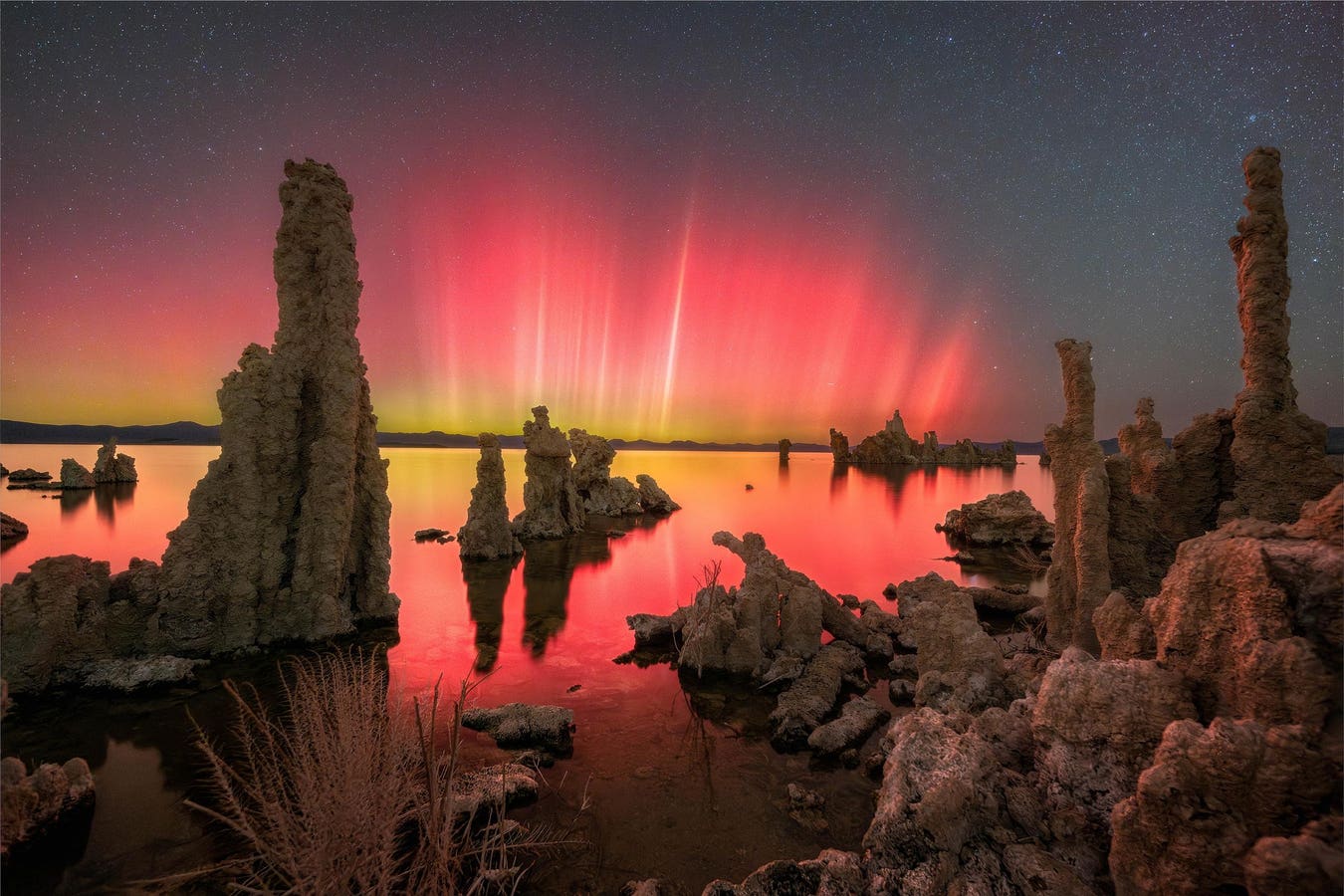Aurora Over Mono Lake: A Rare Dance of Light © Daniel Zafra
The Royal Observatory Greenwich has unveiled the shortlisted images for the annual ZWO Astronomy Photographer of the Year, which celebrates the best space photography from around the world. The entries feature the spectacular displays of aurora in 2024, the Milky Way, stunning star trails, total solar eclipses and the moon.
The Royal Observatory Greenwich reports that it had over 5,500 entries from 69 countries for what is generally agreed to be the most prestigious astrophotography competition. The overall winner, who will receive $13,600, will be announced on Thursday, Sept. 11, along with the winners of the competition’s other nine categories and two special prizes.
The winning photographs will be showcased at the National Maritime Museum, close to the Royal Observatory Greenwich, from Sept. 12. “This competition is a tribute to those who turn their eyes to the stars and share what they see with the world,” said Sam Wen, Founder and CEO of ZWO, the competition’s sponsor.
A solitary dragon tree stands tall in the heart of Socotra’s Dragon Blood Tree forest, Yemen.
A Dragon Tree Trail In Yemen
One of the most striking images is this one above, of a Dragon Tree on the island of Socotra, Yemen. It was taken by Benjamin Barakat while in the heart of Socotra’s Dragon Blood Tree forest in March 2024. Another standout is the main image at the top of this article, of the Northern Lights over Mono Lake, California. It was shot by Dan Zafra at CaptureTheAtlas.com, who was shortlisted in 2022 and won the people’s choice category. “This photograph captures the rare occurrence of Northern Lights in California,” he says. “Vibrant ribbons of magenta and green light up the sky, reflecting in the still waters among the rock formations.” The shot was taken on Oct. 10, 2024, one of the three strongest displays of aurora in 2024.
The full Moon rising above the rugged peaks of the Dolomites. With no clouds in sight and in … More
The Full Moon
The shortlist contains multiple images of the moon. Above is the full moon rising above the rugged peaks of the Dolomites in Italy. Shot in perfect conditions, the golden light of sunset bathes the mountains, and the timing of the shot is exquisite. Photographer Fabian Dalpiaz calls this shot “Moonrise Perfection Over the Dolomites.” There are other images of the moon — another moonrise, one of the International Space Station appears to transit its disk and another of a moon-Saturn occultation.
The Beaver Moon was the last supermoon of 2024. This photograph was taken from the hazy, Bortle 9 … More
The ‘Mineral Moon’
The “Mineral Moon” Photographer Karthik Easvur took the image, above, of November 2024’s beaver moon — the year’s last supermoon — while in Delhi, India. It was created by first taking hundreds of images and stacking them together, drawing out faint color differences during processing — particularly titanium (blue) and iron (orange and brown). While you can’t see these colors with the naked eye, they’re based on real data and give valuable insight into the moon’s composition and geological history.
Below is another standout Milky Way image, taken by photographer Yujie Zhang in August 2024 while in Songyang County, China. It shows several black geometric buildings appearing to stand on the water’s surface.
Gateway to the Galaxy © Yujie Zhang
What Is The Royal Observatory Greenwich?
The Royal Observatory Greenwich is home to Greenwich Mean Time and the Prime Meridian, an imaginary line of longitude, designated as 0 degrees that runs from the North Pole to the South Pole. The Prime Meridian — which divides the western and eastern hemispheres of the world — is marked as a line on the floor of its courtyard on a hill in Greenwich Park in southeast London, overlooking the River Thames.
The first state-funded, purpose-built scientific institution in the U.K., in 2025, it’s marking 350 years since its foundation in 1675. It was set up by King Charles II to help with astronomy and navigation in an era of European exploration and increasing international trade.
Wishing you clear skies and wide eyes.
